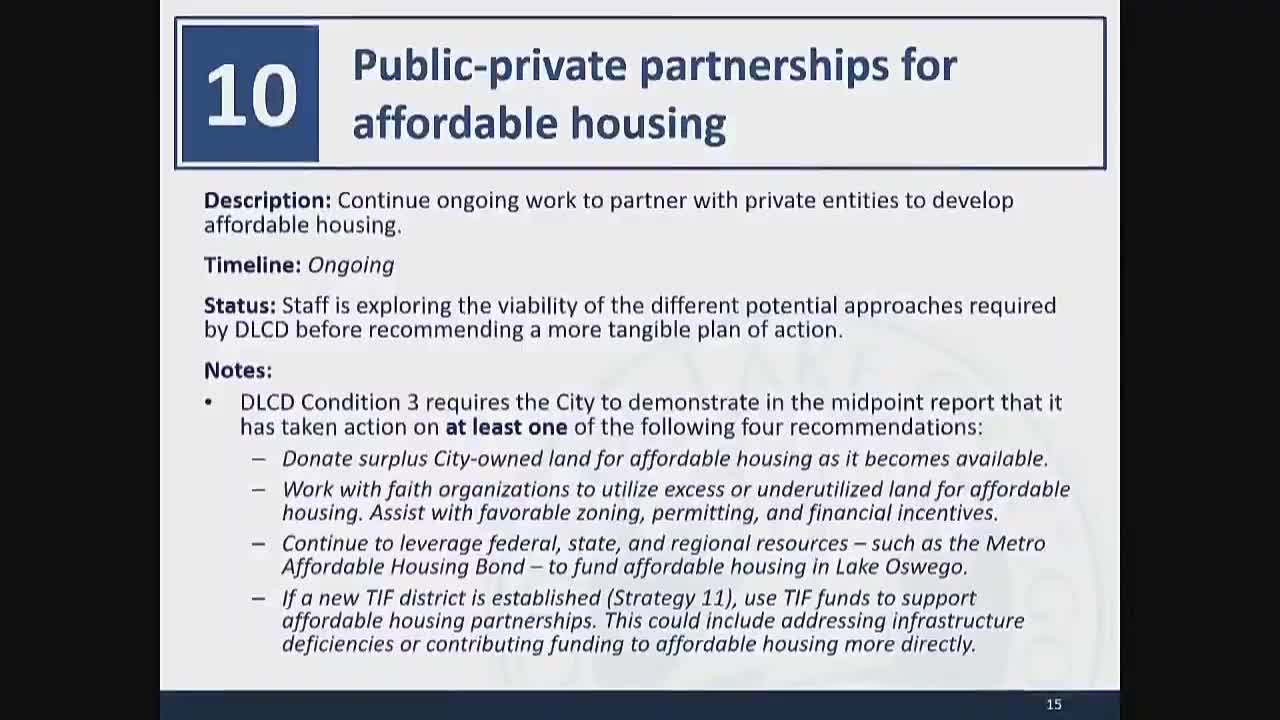City explores TIF funding for affordable housing in Foothills urban renewal plan
May 29, 2025 | Lake Oswego City, Clackamas County, Oregon
This article was created by AI summarizing key points discussed. AI makes mistakes, so for full details and context, please refer to the video of the full meeting. Please report any errors so we can fix them. Report an error »

During a recent meeting of the Lake Oswego City Council, discussions centered on strategies to enhance affordable housing in the community, particularly through the use of city-owned land and tax increment financing (TIF). The council is exploring partnerships with faith organizations to utilize underused land for affordable housing projects, acknowledging the limited availability of surplus city-owned land.
City officials emphasized the importance of being proactive in identifying opportunities for affordable housing development over the next three years. They noted that while the city has not yet established a direct course of action, there is a commitment to incorporate affordable housing into the urban renewal plan for the Foothills neighborhood. This plan will allow the city to leverage TIF funding to support housing initiatives.
TIF works by capturing the increased property tax revenue generated from new developments within designated urban renewal areas. This revenue can then be reinvested into the community, specifically for infrastructure and affordable housing projects. The council is tasked with clarifying the scope of TIF funding, deciding whether to limit its use to the Foothills area or to explore broader applications throughout the city.
As the city moves forward, officials are keen to engage with the community and stakeholders to ensure that the strategies align with local needs and expectations. The council's ongoing discussions reflect a commitment to addressing the pressing issue of affordable housing, which remains a significant concern for residents. The next steps will involve further collaboration and planning to solidify these initiatives and meet the community's housing needs effectively.
City officials emphasized the importance of being proactive in identifying opportunities for affordable housing development over the next three years. They noted that while the city has not yet established a direct course of action, there is a commitment to incorporate affordable housing into the urban renewal plan for the Foothills neighborhood. This plan will allow the city to leverage TIF funding to support housing initiatives.
TIF works by capturing the increased property tax revenue generated from new developments within designated urban renewal areas. This revenue can then be reinvested into the community, specifically for infrastructure and affordable housing projects. The council is tasked with clarifying the scope of TIF funding, deciding whether to limit its use to the Foothills area or to explore broader applications throughout the city.
As the city moves forward, officials are keen to engage with the community and stakeholders to ensure that the strategies align with local needs and expectations. The council's ongoing discussions reflect a commitment to addressing the pressing issue of affordable housing, which remains a significant concern for residents. The next steps will involve further collaboration and planning to solidify these initiatives and meet the community's housing needs effectively.
View full meeting
This article is based on a recent meeting—watch the full video and explore the complete transcript for deeper insights into the discussion.
View full meeting
